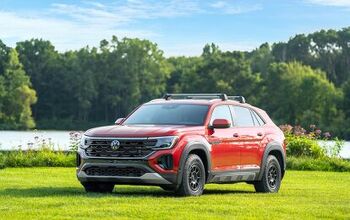Chrysler Is Now Officially An Italian Company, Total Taxpayer Cost: $1.3b
Video from Chrysler’s last “new day,” shortly after being bought by Cerberus in 2007
According to Chrysler Group’s latest 8K, filed with the SEC today
On July 21, 2011, Fiat North America LLC, a wholly-owned subsidiary of Fiat S.p.A. (collectively, “Fiat”), acquired beneficial ownership of the membership interests in Chrysler Group LLC (the “Company”) held by the U.S. Department of the Treasury (“U.S. Treasury”) and the Canadian government’s special purpose entity, the Canada Development Investment Corporation (“Canadian government”). Fiat acquired 98,461 Class A membership interests in the Company from the U.S. Treasury, representing approximately 6 percent of the fully-diluted ownership interest in the Company for cash consideration of $500 million. Pursuant to a separate agreement, Fiat paid $125 million to acquire 24,615 Class A membership interests in the Company from the Canadian government, representing approximately 1.5% of the fully-diluted ownership interest.
Pursuant to these self-funded transactions, Fiat became the owner of a majority of the membership interests in the Company. Fiat now holds 55.3% of the Company’s outstanding equity, or 53.5% on a fully-diluted basis, taking into account the occurrence of the third and final Class B Event described in the LLC Operating Agreement which is expected to occur by the end of 2011. The remaining equity in the Company is owned by the UAW Retiree Medical Benefits Trust, a voluntary employees’ beneficiary association trust (the “VEBA”).
That’s right, the United States taxpayers are now fully-divested from their “investment” in Chrysler, which is now a majority-owned division of Fiat. Once the EPA certifies that Dodge’s new Fiat-based compact car gets 40 MPG unadjusted combined (about 30 MPG in “window sticker” EPA mileage), Fiat will get another 5% of Chrysler’s equity, bringing its stake in the company to 58.3%. In a statement, the Treasury estimated the final cost of the bailout to be $1.3b (as it does not expect any meaningful recovery from Old Chrysler’s liquidation), although that does not include several taxpayer outlays, without which the rescue of Chrysler would not have been possible. By our math, the total bill for Chrysler’s rescue is closer to $4.7b.
So, after all the drama was it worth it? For now I’ll leave that one to the comment section… and history.
More by Edward Niedermeyer
Latest Car Reviews
Read moreLatest Product Reviews
Read moreRecent Comments
- MaintenanceCosts Nobody here seems to acknowledge that there are multiple use cases for cars.Some people spend all their time driving all over the country and need every mile and minute of time savings. ICE cars are better for them right now.Some people only drive locally and fly when they travel. For them, there's probably a range number that works, and they don't really need more. For the uses for which we use our EV, that would be around 150 miles. The other thing about a low range requirement is it can make 120V charging viable. If you don't drive more than an average of about 40 miles/day, you can probably get enough electrons through a wall outlet. We spent over two years charging our Bolt only through 120V, while our house was getting rebuilt, and never had an issue.Those are extremes. There are all sorts of use cases in between, which probably represent the majority of drivers. For some users, what's needed is more range. But I think for most users, what's needed is better charging. Retrofit apartment garages like Tim's with 240V outlets at every spot. Install more L3 chargers in supermarket parking lots and alongside gas stations. Make chargers that work like Tesla Superchargers as ubiquitous as gas stations, and EV charging will not be an issue for most users.
- MaintenanceCosts I don't have an opinion on whether any one plant unionizing is the right answer, but the employees sure need to have the right to organize. Unions or the credible threat of unionization are the only thing, history has proven, that can keep employers honest. Without it, we've seen over and over, the employers have complete power over the workers and feel free to exploit the workers however they see fit. (And don't tell me "oh, the workers can just leave" - in an oligopolistic industry, working conditions quickly converge, and there's not another employer right around the corner.)
- Kjhkjlhkjhkljh kljhjkhjklhkjh [h3]Wake me up when it is a 1989 635Csi with a M88/3[/h3]
- BrandX "I can charge using the 240V outlets, sure, but it’s slow."No it's not. That's what all home chargers use - 240V.
- Jalop1991 does the odometer represent itself in an analog fashion? Will the numbers roll slowly and stop wherever, or do they just blink to the next number like any old boring modern car?






























Comments
Join the conversation
I don't take sides with any of this - not that I don't stand for anything, it's just the fact that the government will do what it deems right in its own mind, whether anyone else likes it or not. Let's see if this comes back to bite them. I do feel it's more jobs being sent out of the country, though. Am I worried? For now, no, as I'm still laughing over "bacon stripes" and "blitzkrieg..." from VanillaDude's comments yesterday!
Speaking for myself, as a Mopar fan, I think it was worth it. I believe this because Fiat was the only Chrysler parent company that had anything remotely resembling a workable plan to fix the ills of the original Chrysler company ... including its most notorious: inferior quality vehicles. Given such moves, what's so bad about Chrysler being an Italian company? I don't know about anyone else, but I think that's a good thing.